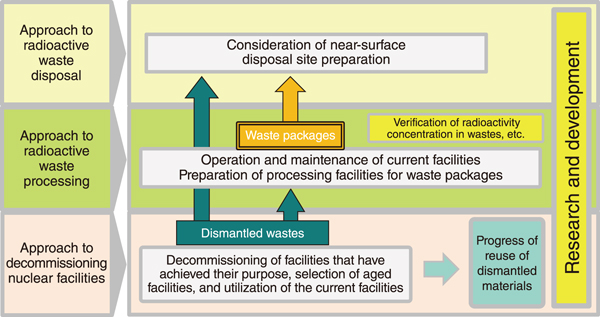
Fig.1 Technological development related to the decommissioning of nuclear facilities and processes, from the generation to the disposal of low-level radioactive waste
To maintain and develop its research and development capabilities by strengthening the safety of its nuclear facilities and to ensure the steady implementation of backend measures, the JAEA has compiled the “Backend Roadmap” (issued on December 26, 2018), which lays out long-term prospects and policies for backend measures, including the treatment and disposal of radioactive waste. The JAEA has also issued the “Medium- and Long-Term Management Plan of our Facilities” (issued on April 1, 2017; amended on April 1, 2022), which covers 89 nuclear facilities, as a comprehensive plan detailing three points: the selection and consolidation of facilities; safety measures; and management of backend issues for JAEA facilities.
On March 28, 2018, the decommissioning plan for “Monju” was approved by the Nuclear Regulation Authority (NRA) and on June 13, 2018, the decommissioning plan for the Tokai Reprocessing Plant (TRP) was approved by the NRA.
In addition, we formulated a technology development strategy roadmap to introduce new technologies and knowledge, promote the development of technologies aimed at improving overall safety and reducing costs in decommissioning and waste disposal, and implement the results in field. Based on this roadmap, the technologies for the safe and effective dismantling of nuclear facilities, minimization and stabilization of radioactive wastes, and disposal of radioactive wastes are under development (Fig.1). The proposed disposal project applies to low-level radioactive wastes from not only the JAEA facilities but also research facilities of universities and private organizations.
In October 2022, the JAEA completed the removal of the fuel assemblies in the first phase of decommissioning of “Monju” and started the second phase, which is the preparatory period for dismantling. With regard to “Fugen,” the JAEA completed the dismantling and removal of equipment around the reactor (i.e., the reactor cooling system A and B loops), excluding large equipment in the reactor building, and currently, the JAEA is steadily proceeding toward the dismantling of the reactor itself.
In the TRP, as a measure to reduce the risk of facilities, the vitrification of the high-level liquid waste (HLLW) is being promoted with primary focus on safety. The JAEA has also developed advanced vitrification techniques. In this fiscal year, the completed advanced melter is being subjected to operation tests using simulated HLLW in the cold mock-up test facility to determine the safe and stable operational parameters, and subsequently, it will be installed in Tokai Vitrification Facility.
This chapter discusses the technical development results in the relevant fields in the recent years, the evaluation of the radiation dose from the facilities necessary for considering the placement and design of burial facilities for low-level radioactive waste (waste from research facilities, etc.) (Topic 10-1); the development of maintenance technology for the stable operation of the equipment that incinerates radioactive organic liquid waste containing flame-retardant substances generated during dismantling and decommissioning of facilities (Topic 10-2); the development of solidification material to trap radioactive elements and hazardous substances in waste by utilizing the properties of geopolymers (Topic 10-3); and the storage of plutonium in sealed metal containers instead of conventional polyvinyl chloride bags for safe long-term storage (Topic 10-4).